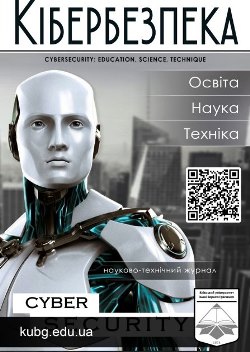SECURITY OF DATA TRANSFER TO THE INTERNET OF THINGS
DOI:
https://doi.org/10.28925/2663-4023.2019.6.618Keywords:
IoT data; security; application programming interface; massager queue telemetry transport protocol; cloud database; scenario; TLS protocol; encryption data.Abstract
The article discusses the MQTT protocol for the Internet of Things and touch wireless networks, its features, applications, and specific procedures. The information elements and principles of the message owner are analyzed. This article covers topics such as secure storage of the Internet of Things, the transfer of that data through the secure interface of mobile devices and web applications. It also looks at all the key tools provided by MQTT for information security. The proposed identification of users in this article is to identify them from the Cloudant database. This application works on the Node.js server in IBM Bluemix and provides an API or RESTful that requires mobile client authentication. The mobile client access service is designed to call these two APIs in any authentication application. It is suggested to use separate authentication approaches: for the web application - on the Cloud Directory and for the mobile application - MobileFirst Client Access. However, both the web and mobile applications use the same level of application security to allow the user to access device data. To improve the security of messages, it is suggested to use a transport layer security protocol that uses different cryptographic methods. We are offered homomorphic encryption of these protocols. The transport layer security protocol increases the performance of the protocol and reduces the computational cost, but it does not apply when initially connecting to the server or when a previous session has already expired. The article presents an algorithm for the detection of weak symmetry breaking for the analysis of the chance of a recovered e-mail. A method of homomorphic encryption and authentication of users and their emails in wireless sensor networks of the Internet of Things is proposed.
Downloads
References
O. Beley, “Features of the management of data encryption keys in the cloud storage MS SQL Azure”, Informatyka, Automatyka, Pomiary w Gospodarce I Ochronie Środowiska, T. 8, № 4, pp. 12–15, 2018.
O. Belej, I. Artyshchuk, W. Sitek, “The Controlling of Transmission of Chaotic Signals in Communication Systems Based on Dynamic Models”, CEUR Workshop Proceedings, Vol. 2353, pp. 664-673, 2019.
F. Wu, C. Rüdiger, M.R. Yuce, “Real-Time Performance of a Self-Powered Environmental IoT Sensor Network System,” Sensors, 17:282, pp. 184-253, 2017.
M.R. Yuce, J. Khan, “Wireless Body Area Networks: Technology, Implementation, and Applications,” CRC Press; Boca Raton, FL, USA, pp. 67-79, 2011.
H. C. Keong, M. R. Yuce, “UWB-WBAN sensor node design,” IEEE Trans., Boston, MA, pp. 2176-2179, 2011.
E. Wilhelm, S. Siby, Y. Zhou, X.J.S. Ashok, M. Jayasuriya, S. Foong, J. Kee, K.L. Wood, N.O. Tippenhauer, “Wearable environmental sensors and infrastructure for mobile large-scale urban deployment,” IEEE Sens. J., pp. 137-149, 2016.
K. Mekki, E. Bajic, F. Chapel, F. Meyer, “A comparative study of LPWAN technologies for large-scale IoT deployment,” ICT Express, pp. 276-279, 2018.
X. Zhang, M. Zhang, F. Meng, Y. Qiao, S. Xu, S.H. Hour, “A Low-Power Wide-Area Network Information Monitoring System by Combining NB-IoT and LoRa,” IEEE Internet Things J., pp. 356-419, 2018.
Z. Zhu, T. Liu, G. Li, T. Li, Y. Inoue, “Wearable sensor systems for infants,” Sensors, pp. 3721–3749, 2015.




